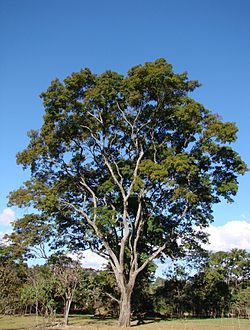Plants
Psychoactive plants include, but are not limited to, the following examples:
- Cannabis : cannabinoids
- Tobacco: nicotine, anabasine, and other Nicotinic agonists, as well as beta-carboline alkaloids
- Coca: cocaine, ecgonine and other coca alkaloids
- Opium poppy: morphine, codeine, thebaine, papaverine, noscapine, and narceine
- Salvia divinorum : salvinorin A and other Salvinorins
- Khat: cathine and cathinone
- Kava: kavalactones
- Nutmeg: myristicin
- Nightshade ( Solanaceae ) plants containing hyoscyamine, atropine, and scopolamine:
- Datura
- Deadly nightshade ( Atropa belladonna )
- Henbane ( Hyoscyamus niger )
- Mandrake ( Mandragora officinarum )
- Other Solanaceae

- Psychoactive cacti, which contain mainly mescaline:
- Peyote
- Other Lophophora
- Peruvian torch cactus
- San Pedro cactus
- Trichocereus macrogonus var. macrogonus (syn. Echinopsis peruviana)
- Trichocereus macrogonus var. pachanoi (syn. Echinopsis pachanoi)
- Trichocereus bridgesii
- Other Echinopsis
- Mild stimulant and vasoconstrictor plants that contain mainly caffeine and theobromine:


- Other plants:
- Mimosa hostilis : DMT
- Chacruna: DMT, NMT
- Cebil and Yopo: DMT, 5-MeO-DMT, bufotenin
- Mucuna pruriens
- Morning glory species, notably Hawaiian Baby Woodrose: lysergic acid amide
- Sinicuichi: Vertine, Lyfoline, Lythrine and other sinicuichi alkaloids
- Monotropa uniflora: Grayanotoxin (also found in Rhododendron pollen and mad honey)
- Iboga: ibogaine, noribogaine, ibogamine, voacangine, 18-methoxycoronaridine
- Ephedra: ephedrine
- Acacia species
- Damiana
- Leonotis leonurus: Docosatetraenoylethanolamide and other alkaloids
- Calea zacatechichi
- Silene capensis
- Valerian
- Areca nut: arecaidine and arecoline
- Kratom: mitragynine, mitraphylline, 7-hydroxymitragynine, raubasine, and other Kratom alkaloids
- Rauvolfia serpentina : rauwolscine
- Rauvolfia vomitoria
- Nymphaea caerulea (Egyptian lotus or blue lotus): apomorphine, nuciferine
- Yohimbe : yohimbine
- Kanna: mesembrine and mesembrenone
- Glaucium flavum (yellow horned poppy, yellow hornpoppy or sea poppy): glaucine
- California poppies: Protopine and Californidine
